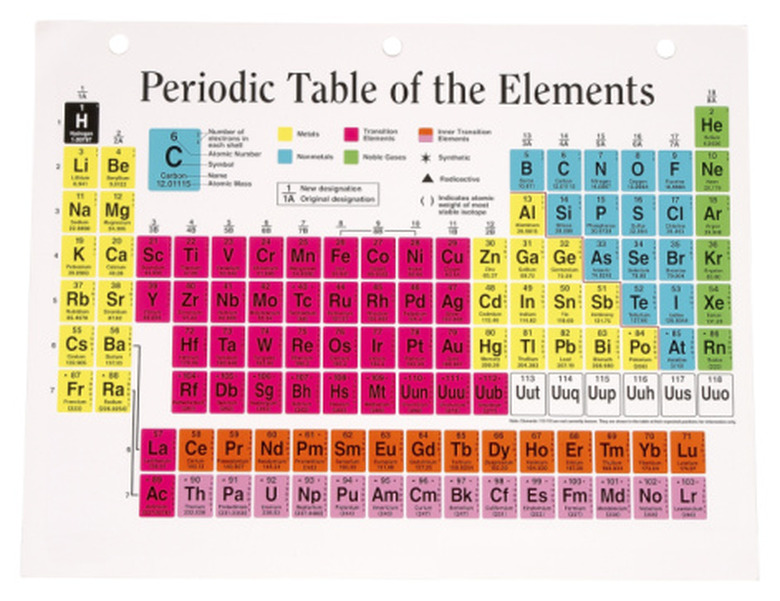What Orbits The Center Of An Atom?
Atomic structure is a model that describes how each of the atoms of the periodic table of elements is arranged. Each atom is made up of smaller particles called subatomic particles. These particles have properties such as mass and charge that cause them to interact with each other. An atom's basic structure is that of a central nucleus orbited by one or more electrons.
Atomic Nucleus
Atomic Nucleus
The center of an atom is called the nucleus. It is the densest part of an atom and is made up of two different subatomic particles. The first particle, the proton, is positively charged. It gives an atom its name and location in the periodic table of elements. The protons are bound to the second kind of subatomic particle, neutrons, which do not have a charge. The nucleus is the heaviest part of an atom.
Orbiting Particles
Orbiting Particles
The nucleus is orbited by the third type of subatomic particle, electrons. These subatomic particles are negatively charged and have very little mass in comparison to protons and neutrons. Electrons exist in an "electron cloud," which consists of the highly energetic orbits of these particles as they surround the nucleus. Since electrons are so tiny and move with great speed, scientists are unable to ever exactly locate them within the electron cloud.
Electron Habits
Electron Habits
Electrons exist in a series of levels around the nucleus of an atom. When an atom receives energy, such as from heat, this increases the activity of the electrons in the cloud, causing them to jump up in energy level until they expend the amount of energy they receive. Each orbital level has a maximum number of electrons it can hold. The first orbital level of electrons can hold up to two electrons, and the next orbital level can hold up to eight electrons before the electrons of an atom move up to occupy a new orbital level.
Isotopes and Ions
Isotopes and Ions
The atomic number of an atom is its number on the periodic table. This number describes how many protons an atom has. This number also describes how many electrons an atom has and means the atom is electrically neutral, or has no electrical charge. Atoms can also occur as isotopes or ions. Isotopes are created when the normal number of neutrons in an atom is changed. An ion forms when an electron is wrenched from its orbit around the nucleus, which alters the charge of the overall atom and can make it more likely to bond to other atoms.
Cite This Article
MLA
Martin, Victoria. "What Orbits The Center Of An Atom?" sciencing.com, https://www.sciencing.com/orbits-center-atom-8614649/. 24 April 2017.
APA
Martin, Victoria. (2017, April 24). What Orbits The Center Of An Atom?. sciencing.com. Retrieved from https://www.sciencing.com/orbits-center-atom-8614649/
Chicago
Martin, Victoria. What Orbits The Center Of An Atom? last modified August 30, 2022. https://www.sciencing.com/orbits-center-atom-8614649/
